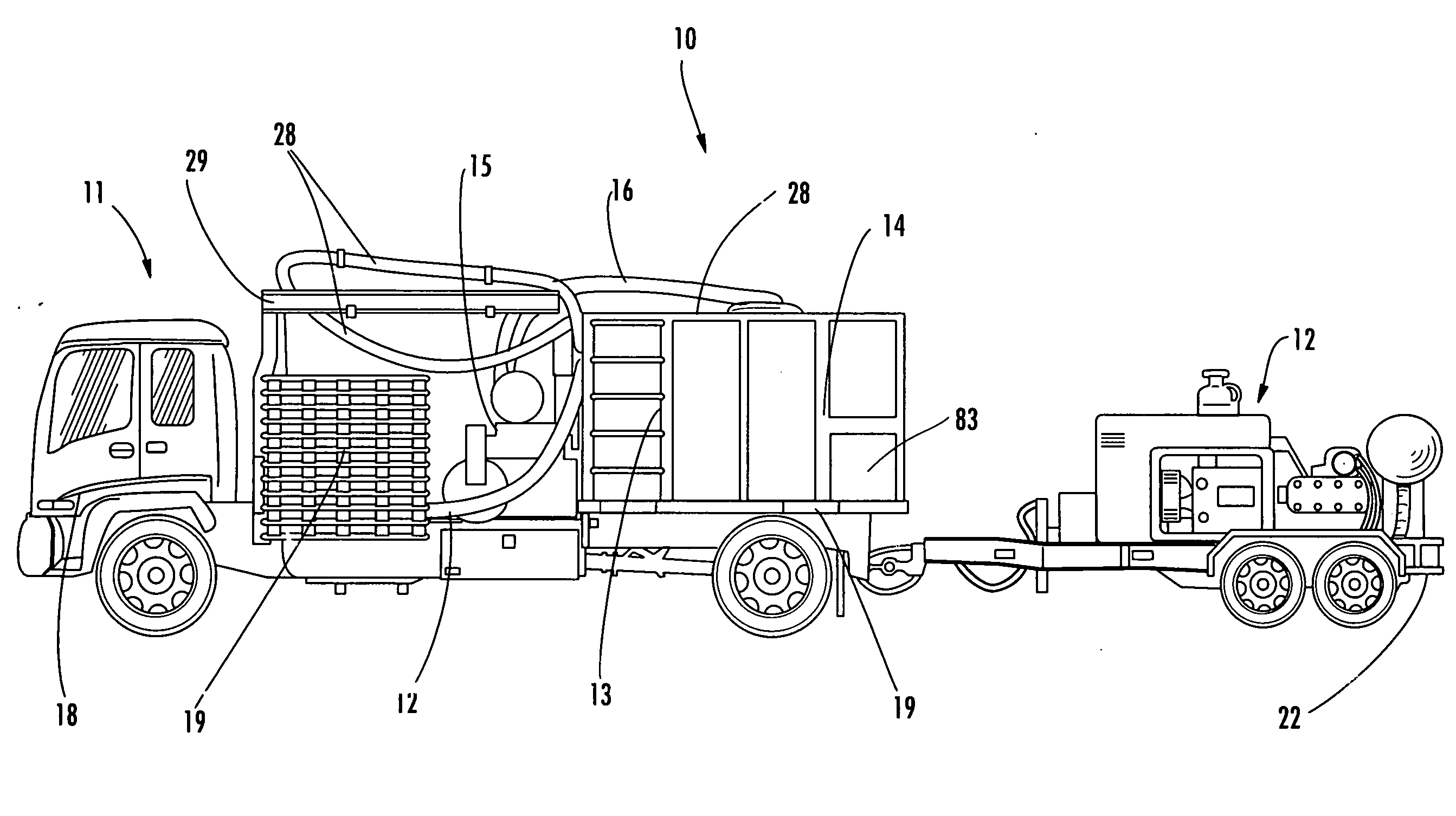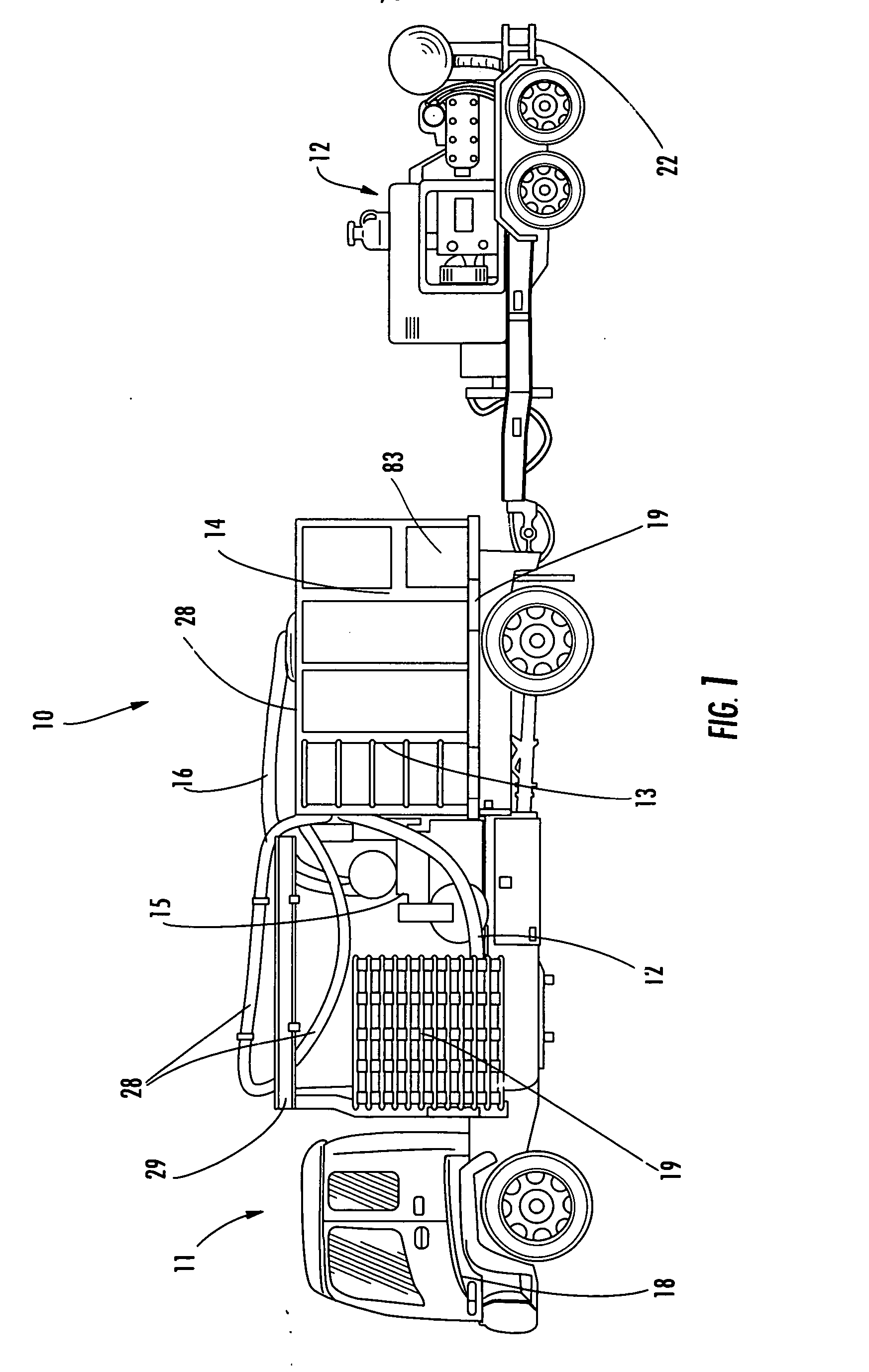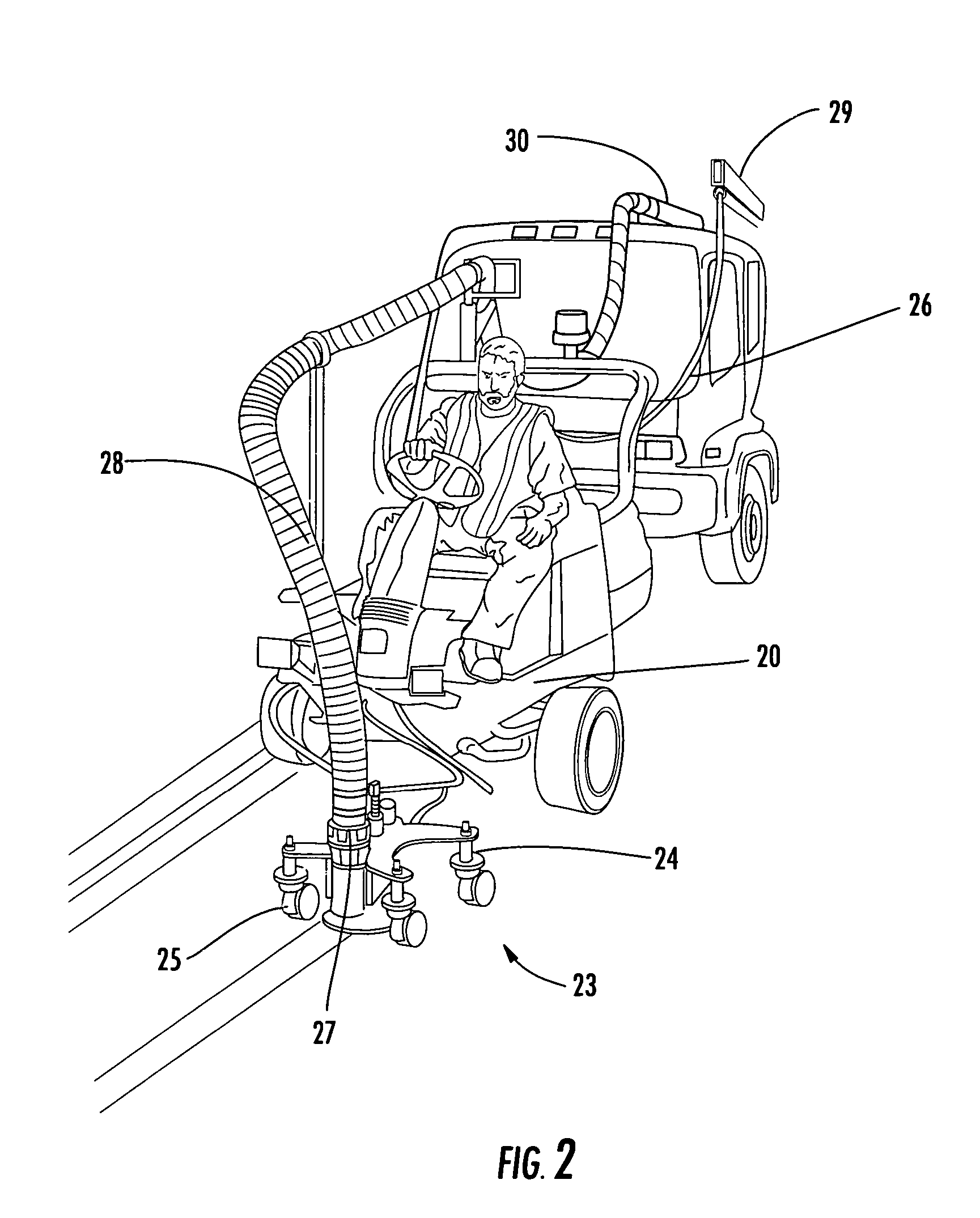Transportable holding tank for stripe removal system
a technology of stripe removal and holding tank, which is applied in the direction of cleaning equipment, cleaning using liquids, cleaning equipment, etc., can solve the problems of equipment gumminess, unsatisfactory surface removal of marking material, and inability to remove markings, etc., and achieve the effect of continually reducing the amount of capacity able to be regained
- Summary
- Abstract
- Description
- Claims
- Application Information
AI Technical Summary
Benefits of technology
Problems solved by technology
Method used
Image
Examples
Embodiment Construction
[0031] The paint removal system 10, shown in FIG. 1, includes a prime-mover truck 11 and a trailer 12. The truck has a forward cab-over 18 for the driving controls and operator. Mounted on the bed 81 of the truck is the water reservoir 13 and the sump 14 or vacuum chamber. The reservoir and sump are interconnected by a strategically positioned duct for continuous dumping of filtered wastewater when operating from a fixed position where liquid is supplied to the high pressure pump by a means other than the reservoir 13.
[0032] The sump 14 is positioned on the rear portion 82 of the bed 81. The rear portion 82 of the bed is pivotally mounted on the truck frame and hydraulicly powered to tilt in the vertical plane permitting dumping of the contents of the sump 14. The sump 14 is connected to the vacuum pump 15 by hose 16. The intake of a high power vacuum pump capable of approximately 1100 CFM (cubic feet per minute) is connected to the vacuum tank. The vacuum tank and pump are also mo...
PUM
| Property | Measurement | Unit |
|---|---|---|
| length | aaaaa | aaaaa |
| pressure | aaaaa | aaaaa |
| vacuum | aaaaa | aaaaa |
Abstract
Description
Claims
Application Information
 Login to View More
Login to View More - R&D
- Intellectual Property
- Life Sciences
- Materials
- Tech Scout
- Unparalleled Data Quality
- Higher Quality Content
- 60% Fewer Hallucinations
Browse by: Latest US Patents, China's latest patents, Technical Efficacy Thesaurus, Application Domain, Technology Topic, Popular Technical Reports.
© 2025 PatSnap. All rights reserved.Legal|Privacy policy|Modern Slavery Act Transparency Statement|Sitemap|About US| Contact US: help@patsnap.com



